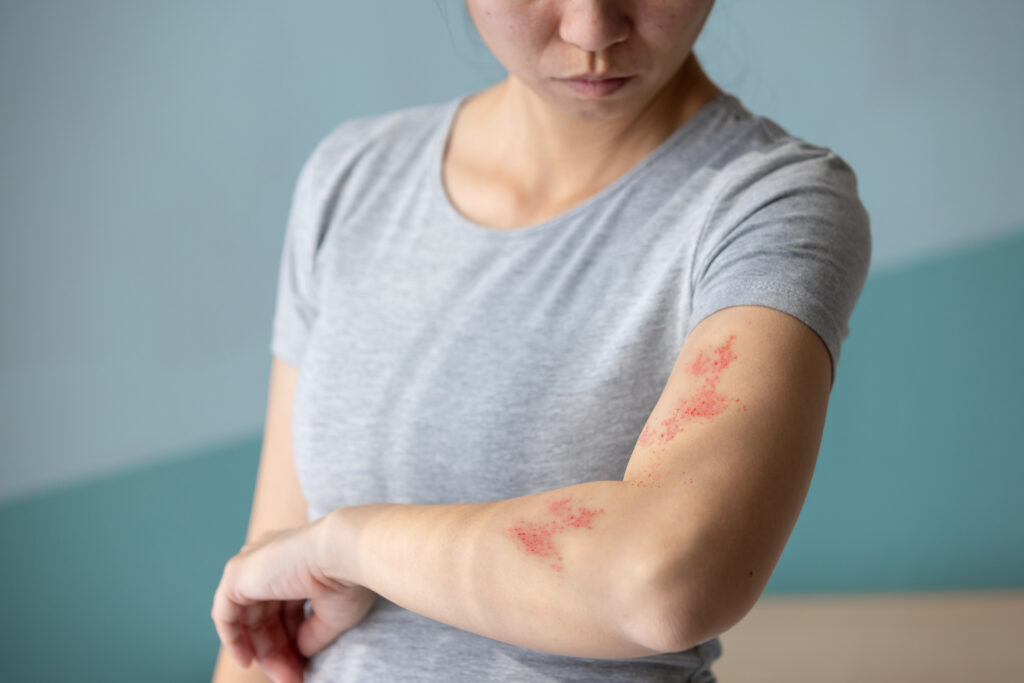
With eight legs and bulbous eyes, spiders may look spooky, yet they are far more passive than pop culture would lead you to believe. Spiders primarily eat insects, so humans are low on their list to attack. However, if you cross into a spider’s space or make them feel threatened, there is a chance that you may get bitten.
Most people who are bitten by spiders don’t develop superpowers. Fortunately, it’s also uncommon to endure severe symptoms. Still, it’s important to understand the potential complications of spider bites to ensure you know when to seek treatment. These are some of the most common biting spiders, symptoms to look out for, when to reach out to your healthcare provider, and how to limit your chances of getting bit.
Common Biting Spiders
Spiders are rarely interested in attacking humans. They typically bite in self-defense, particularly if they perceive they are being attacked. While spiders all produce venom, most of their fangs are too tiny to puncture a person’s skin.
However, some spiders can deliver successful bites; two are known to leave a serious mark. These treacherous biting spiders include:
- Black widows: These distinctive spiders are known for the red hourglass-shaped patterns on their backs. You’ll find these spiders in southern and western states. If bitten, you may experience widespread muscle pain and cramping, shortness of breath, chest tightness, chills, weakness, fever, and seizures.
- Brown recluses: These spiders, found largely in the south and midwest, are also known as “violin spiders” due to an instrument-shaped marking on their foreheads. Their bites can lead to symptoms such as pain and burning, the development of ulcers or dead tissue, fevers, and joint pain.
Other non-dangerous biting spiders include:
- Tarantulas: Found across the globe, these fuzzy spiders can bite people, though the impact will feel similar to a bee sting.
- Hobo spiders: Commonly mistaken for brown recluses, these spiders were once considered extremely venomous but are now recognized to cause mild skin reactions and temporary pain.
- Wolf spiders: These solitary spiders are stellar hunters, but they aren’t aiming for people. Their bites may be accompanied by short-lived pain or itchiness, redness, and a quickened pulse.
- Yellow sac spiders: Since these golden-colored spiders are active hunters (meaning they don’t use a web to catch food), they’re more likely to bite humans than other spiders. Symptoms of a yellow sac spider bite can include a burning sensation, blistering, non-severe muscle cramping, fever, and/or nausea.
What To Do If You’ve Been Bitten
Spider bites are often distinctive from other insects due to their bite pattern, appearing as two small puncture holes on the skin. However, those without lasting effects may not even notice they’ve been bitten. If you are not experiencing any troublesome symptoms, you likely don’t need to worry about identification, and the bite mark should fade.
Still, your next steps should depend on the type of spider that has bitten you and the symptoms you’re experiencing. If you have mild symptoms, home treatment with antibiotic ointment, painkillers, cool compresses, and anti-itch cream is advisable. However, if you identify the spider as a black widow or brown recluse, contact your healthcare provider immediately, as dangerous symptoms can escalate quickly. You may be given an antivenom to counteract the impacts of the poison.
Preventing Spider Bites
For populations who live near black widows and brown recluses, preventative measures can help keep you safe. If these species are a concern in your community (or you are one of the 15% of Americans with arachnophobia), you will want to avoid areas where these spiders are likely to gather.
Spiders bite when threatened, which can occur when their zone is disturbed. You should wear gloves when gardening, weeding, or moving items out of a dark area (such as a garage, attic, or shed). This can prevent direct contact with spiders nestling in loose-leaf piles, empty boxes, or garden beds.
When spending time in outdoor areas with a high incidence of spiders, you should plan to limit your skin exposure. Wearing long pants and sleeves, especially when moving through tall grasses, can decrease your chance of arachnid bites.
Most people are at low risk of spider bites and will likely not require medical intervention if bitten. Still, knowing if you are in a high-risk area is useful to proactively prevent bites, identify spiders, and/or seek treatment.
Resource Links
- “Spider bites” via Mayo Clinic
- “Spider Bites” via KidsHealth
- “Spider Bites” via Cleveland Clinic
- “Brown Recluse Spider Bite” via Columbia University
- “Wolf Spiders” via National Geographic
- “Yellow sac spiders” via Michigan State University
- “Arachnophobia” via Cleveland Clinic





